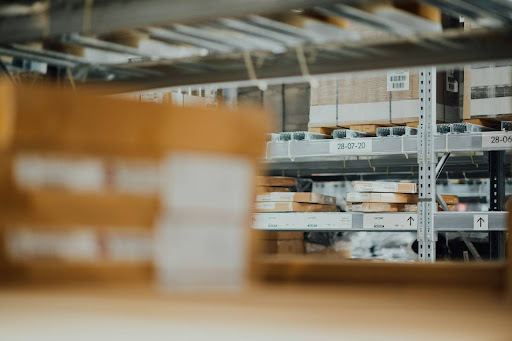Today’s business landscape is dynamic. Many industries shrunk during the pandemic only to reinflate as conditions normalized. But the new normal remains unpredictable and many enterprises, especially startups and small businesses, need to be agile with resources and solutions at the ready—for anything.
Flexible warehouse spaces are an increasingly popular business model for their ability to adapt and respond to changing market demands, seasonal fluctuations, and evolving supply chain conditions. With customizable layouts, scalable storage solutions, and advanced technology integration, flexible warehouse spaces help organizations streamline operations and logistics for overall productivity.
Scalability and Expansion
Flexible warehouse spaces give businesses the scalability they need to support growth and expansion, or even unplanned reduction. As companies evolve their product lines, customer base, or geographic reach, traditional warehouses may struggle to accommodate increased storage capacity and operational throughput. In contrast, flexible spaces offer solutions that adapt to fluctuating demand and business requirements.
Some warehousing models have been replicated in multiple regions to help businesses keep pace with cross-country customer demand. After setting up shop in Northern New Jersey, for example, a company that discovers a new market opportunity in the Southwest could be optimally served by a warehouse for rent houston. In such cases, having comparable access to flexible warehousing in multiple areas of the country provides valuable options and cost efficiencies to meet their needs.
Modular construction techniques, such as prefabricated structures and demountable partitions, enable rapid expansion or reconfiguration of warehouse facilities without the need for costly renovations or disruption to operations. This scalability allows businesses to align their warehouse capacity with market demand, minimize capital expenditures, and mitigate risks associated with overcapacity or underutilization.
Adaptability and Customization
One of the primary advantages of flexible warehouse spaces is their adaptability to accommodate diverse storage requirements and operational workflows. Unlike traditional warehouses with fixed layouts and rigid structures, flexible spaces offer modular designs that can be easily reconfigured to meet changing needs. This inherent flexibility enables businesses to optimize space utilization, minimize waste, and effectively manage inventory fluctuations.
By leveraging adjustable racking systems, mezzanine levels, and partition walls, businesses can create custom storage configurations tailored to their specific products and operational workflows. For example, seasonal goods can be stored in dedicated sections during peak demand periods, while high-demand items can be strategically positioned for efficient picking and packing processes. This versatility allows businesses to maximize the use of available space while maintaining optimal accessibility and workflow efficiency.
Collaborative Partnerships and Shared Spaces
One of the greatest benefits of flexible warehousing is the access they provide to state-of-the-art infrastructure, specialized equipment, and shared spaces that are beyond capital budgets for small businesses.
Those amenities include forklifts, loading docks, Wi-Fi, industrial workspaces, reservable conference rooms, and common-area kitchen facilities. Tenant partnerships promote knowledge sharing among same-sector companies or adaptable business practices across industries to establish a lucrative ecosystem of innovation and collaboration. By co-locating with complementary businesses or industry peers, companies can explore opportunities for joint ventures, cross-selling, and research initiatives.
Environmental Sustainability and Green Initiatives
For some businesses, sustainable practices and green initiatives are essential to their operating values and mission. Flexible warehouse spaces offer numerous opportunities to implement sustainable design principles, energy-efficient technologies, and eco-friendly materials throughout the facility.
From passive design strategies such as natural ventilation and daylight harvesting to active measures such as energy-efficient lighting systems and solar panels, businesses can reduce energy consumption, lower operating costs, and minimize environmental impact. Additionally, rainwater harvesting systems, onsite recycling programs, and green landscaping practices can further enhance sustainability and resilience against climate change-related risks.
Some warehouse spaces provide a platform for implementing innovative sustainability initiatives, such as shared electric vehicle (EV) charging stations, last-mile delivery hubs, and urban farming initiatives. By embracing sustainable practices and green technologies, businesses can differentiate their brand, attract environmentally conscious consumers, and support the transition to a low-carbon economy.
Technology Integration and Automation
Innovative technologies play a pivotal role in optimizing the efficiency and productivity of flexible warehouse spaces. By integrating advanced warehouse management systems (WMS), inventory tracking software, and automated material handling equipment, businesses can streamline logistics processes, enhance inventory visibility, and improve order fulfillment accuracy.
Real-time data analytics and predictive analytics capabilities empower businesses to optimize inventory levels, forecast demand patterns, and identify opportunities for process improvement. By leveraging actionable insights derived from big data analytics, businesses can make informed decisions, optimize resource allocation, and enhance operational agility in response to changing market dynamics.
Flexible warehouse spaces offer businesses a strategic advantage in today’s dynamic and competitive marketplace. By embracing adaptability, scalability, and technological innovation, businesses can optimize their warehouse operations, enhance supply chain resilience, and position themselves for long-term success. Whether through modular design solutions, collaborative partnerships, or sustainable initiatives, flexible warehouse spaces empower businesses to navigate uncertainty, capitalize on emerging opportunities, and thrive in an ever-changing business landscape. As organizations continue to evolve and adapt to shifting market dynamics, flexible warehouse spaces will remain a cornerstone of agile and resilient supply chain management strategies.





